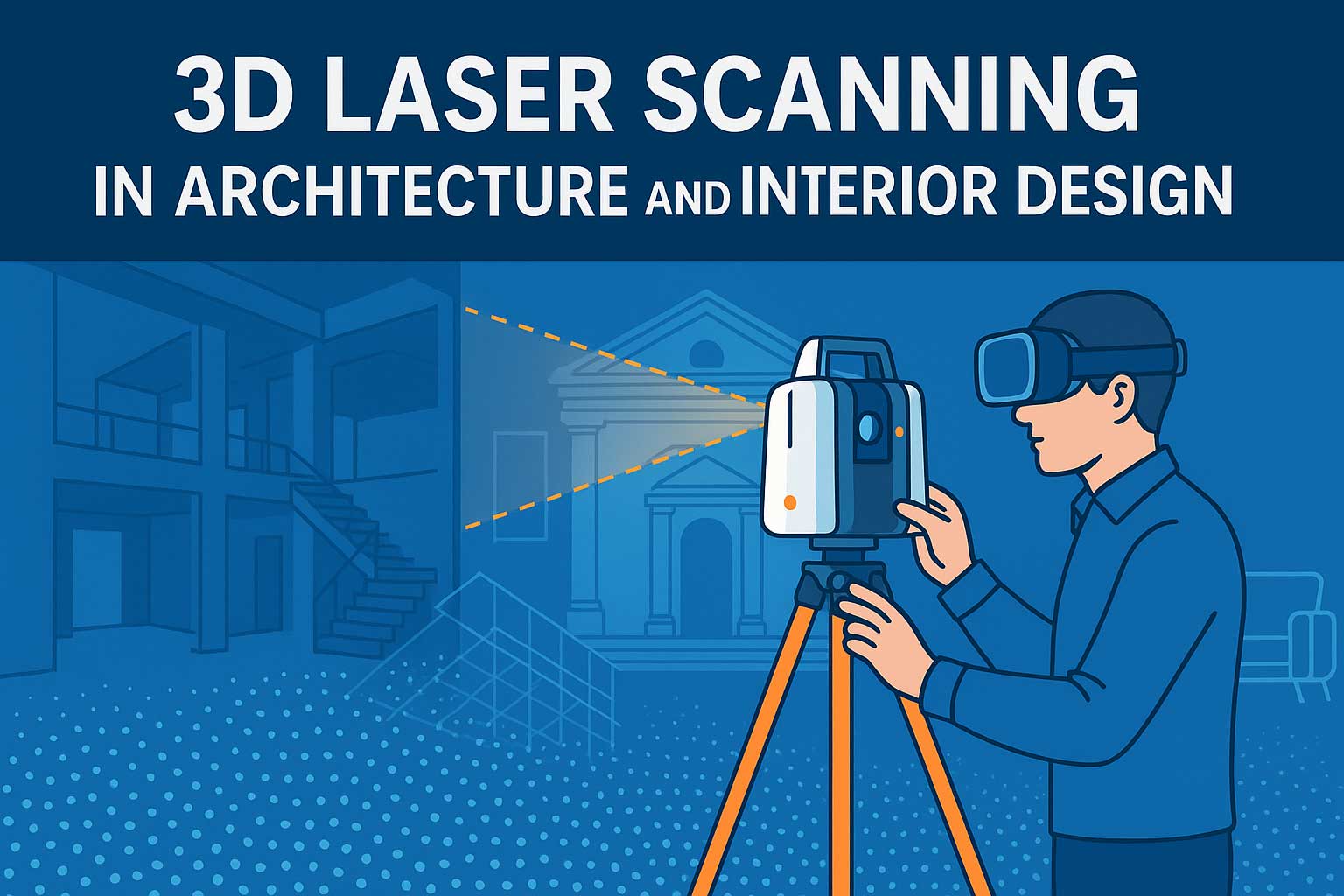Discover how architects and interior designers use 3D laser scanning to streamline renovations, create accurate as-built models, and enhance client presentations.

3D Laser Scanning in Architecture and Interior Design
What Is 3D Laser Scanning in Architecture?
3D laser scanning is the process of capturing the geometry of physical spaces using a laser-based device. The output is a point cloud—a dense 3D representation of real-world conditions. This data can then be converted into CAD or BIM models for design, measurement, and visualization.
Benefits for Architects and Designers
- Accurate As-Built Documentation: Capture real dimensions, levels, and geometries with millimeter precision.
- Time Savings: Eliminate manual measurements and reduce site visits.
- BIM Integration: Import point clouds into Revit or ArchiCAD for design modeling.
- Clash Detection: Identify spatial conflicts early in the design process.
- Enhanced Visual Communication: Use 3D scans for walkthroughs, AR/VR previews, and client presentations.
Use Cases in Architecture and Interior Design
- Historical Renovation: Scanning old buildings to preserve architectural details before redesign.
- Interior Fit-Out: Measuring complex interior spaces for cabinetry, lighting, or HVAC layouts.
- Facade Surveying: Capturing external walls, window placements, and elevation details.
- Space Planning: Creating accurate floor plans and ceiling grid layouts.
- Virtual Staging: Overlaying design concepts on actual space data.
From Scan to Design: Typical Workflow
- Perform laser scan using a tripod or handheld device
- Register point cloud using software like ReCap, FARO SCENE, or Cyclone
- Import data into BIM/CAD platform for modeling
- Extract floor plans, sections, or 3D massing models
- Use models for presentation, documentation, and permits
Many design firms also integrate VR/AR platforms for virtual tours based on real scan data.
Recommended Scanner Types
For architectural projects, we recommend:
- Tripod scanners for high-resolution scans of buildings (e.g., Leica RTC360, Trimble X7)
- Handheld scanners for interiors, furniture, and decorative details (e.g., Artec Leo, Shining 3D HX)
Need help choosing the right tool? Check out our architecture scanner comparison guide.
Conclusion
3D laser scanning brings speed, accuracy, and clarity to architectural and interior projects. Whether you’re designing a new space or retrofitting an old one, the ability to digitally capture and model real-world environments gives designers a major edge.
Interested in using 3D scanning for your design work? Explore our scanner catalog or get in touch with our team of scanning experts.

Leave a Reply